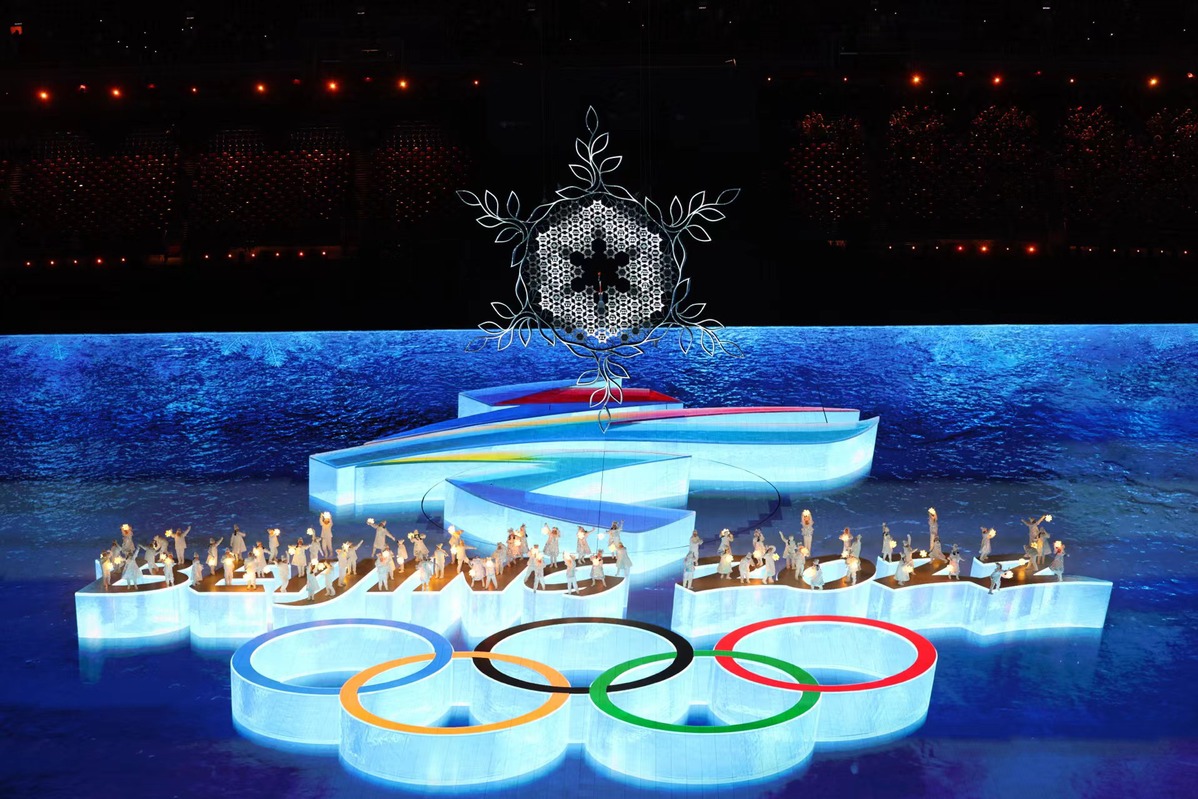Winter Games leaves behind green legacy


The world is facing a climatic calamity owing to massive industrialization, urbanization, population growth and carbon dioxide emissions. Comprehending its dire consequences, China has emerged as a leader in carbon-reduction policies, environmentally friendly development initiatives, and innovations for overcoming the huge threat climate change poses to humankind.
In 2020, China pledged to achieve peak carbon emissions before 2030 and realize carbon neutrality before 2060. The country has already made remarkable achievements in that direction. For example, in just six years, from 2015 to 2021, China doubled its clean energy-generating capacity of more than 1 billion kilowatts, accounting for about half of the world's installed clean energy capacity, which has helped reduce global carbon emissions.
Moreover, despite the COVID-19 pandemic raging in many parts of the world, the organizing committee of the Beijing 2022 Winter Olympic Games worked with the International Olympic Committee and other stakeholders to hold a "simple, safe and splendid" as well as inclusive and eco-friendly sports gala to make the Winter Olympics one of the greenest in history.
The use of eco-friendly technologies in the construction of sports facilities is an apt example of China's contribution to low-carbon global growth. For the first time in the history of the Olympic Games, all venues were lit by renewable energy, and natural carbon dioxide refrigeration systems were installed in indoor stadiums and ice-skating rinks, potentially reducing energy consumption by more than 20 percent. Plus, all passenger vehicles in the Olympic Village were equipped with energy-saving devices and renewable energy accessories.
The Beijing Winter Olympics was also "carbon neutral", with hydrogen used to light the Olympic torch and power more than 800 vehicles, and 100 percent renewable energy plants supporting venues, and 1.7 million carbon credits offsetting emissions. Carbon emissions were also reduced by carbon credits from forestry programs. At the Pyeongchang 2018 Winter Games, the total baseline emissions were estimated to be 1.637 million metric tons of CO2 equivalent (mtCO2e). This was reduced to 1.306 million mtCO2e at the Beijing Winter Olympics by creating more environmentally friendly infrastructure and 1.7 million carbon credits, compared with the actual offsetting estimate of about 1.028 million mtCO2e, making the entire event carbon neutral and setting an example for other Olympic host cities to emulate.
According to the organizers, a flexible DC power infrastructure with a capacity of 14.1 billion kWh per year, or 10 percent of the city's annual electricity consumption, was built to supply electricity from Zhangjiakou in Hebei province to Beijing. According to National Energy Administration data, the Fengning pumped-storage hydro-power facility has a total installed capacity of 3.6 GW, with 600 MW capacity becoming operational in December 2021.
Similarly, according to the National Development and Reform Commission, 14 Olympic venue and facility operators in Beijing and Zhangjiakou, including Huadian Group and Huaneng Group, took part in market-based green power trading with 14 power-generation utilities in 2021. From January to April 2022, green power trading for Olympic locations totaled 141 million kWh. Which means China's renewable energy expansion after the conclusion of the Winter Games will be fueled by power trading as well.
The government was able to increase the use of hydrogen as a major source of clean energy for the Winter Olympics, which will allow it to reap economic benefits even after the Winter Games. In the last decade, China built up a sizable new energy production capacity, including wind and solar power capacity. Also, China is one of the world's leading "green" hydrogen producers.
The Belt and Road Initiative, too, has been promoting ecological civilization in the countries involved in the initiative. Significantly, the China-Pakistan Economic Corridor, the pivotal project of the Belt and Road Initiative, is following the same path to develop renewable energy projects in order to lessen Pakistan's dependence on fossil fuels. Under the CPEC framework, out of the entire outlay of 21 energy power plants, Pakistan is already generating 1,300 MW of renewable energy.
While two hydroelectric projects with a combined capacity of 1,590 MW are under construction, future projects are expected to add another 1,924.7 MW. And the Karot Hydro Power Project is estimated to reduce emissions by about 3.5 million tons a year after it becomes fully operational later this year, which will also improve Pakistan's clean energy output mix and modernize the energy consumption structure.
Since Pakistan is among the 10 countries worst hit by environmental changes including rapid melting of glaciers, irregular rainfall, floods, deforestation, heat waves, water scarcity, air pollution and depletion of natural resources, the marked increase in the share of renewable power in the country's energy mix due to the CPEC projects will help it to mitigate the effects of climate and environmental changes to some extent. After all, China's template to realize carbon neutrality has inspired Pakistan to aspire for a greener and cleaner future.
The author is a security and political analyst based in Islamabad.
The views don't necessarily reflect those of China Daily.


































